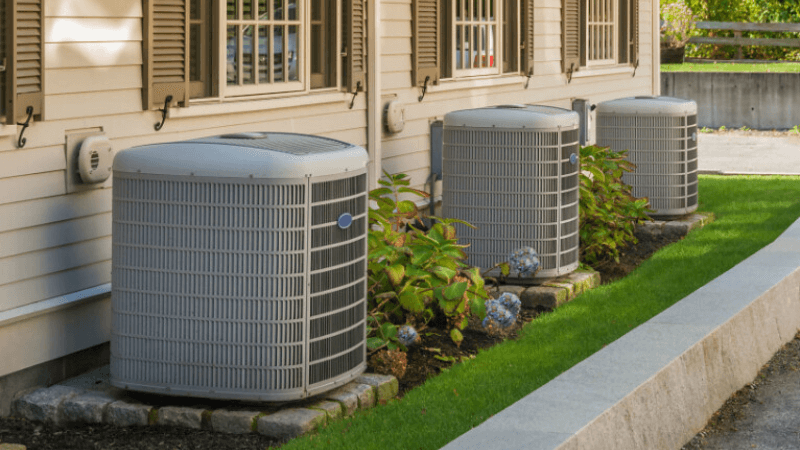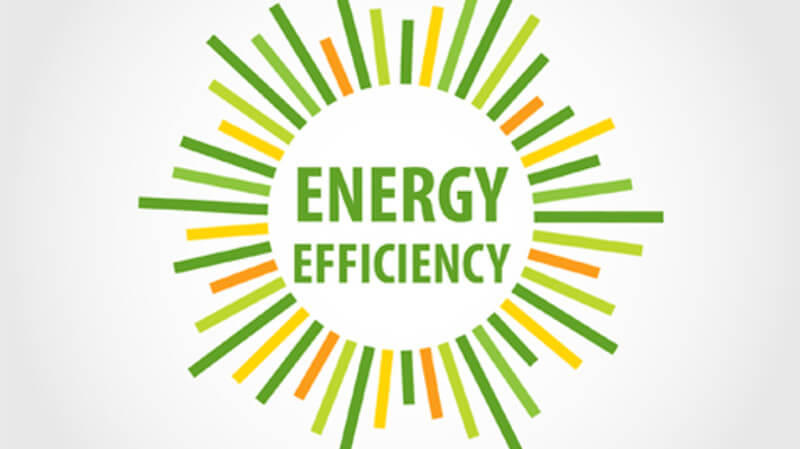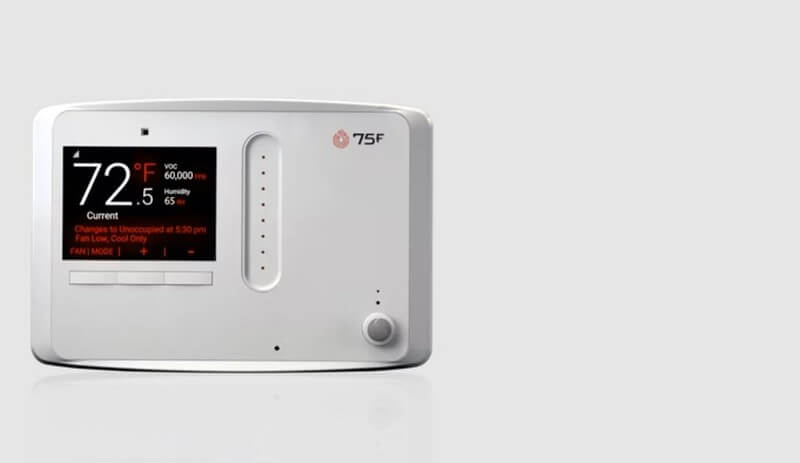An air conditioner is highly effective in controlling and maintaining your home’s temperature during those hot and warmer months. However, choosing the right air conditioner for your home is essential to how effective it cools down your home.
If you’re on the hunt for an air conditioner, there are three main systems: one-stage, two-stage, and variable-speed. In this post, I’ll help you understand the differences between these AC systems to help you make an informed decision. Enjoy.
[snippet]What is a Single-Stage Air Conditioner?
A single-stage AC or one-stage is a type of air conditioner system that runs at one full speed at all times. This type of central air conditioning is prevalent in most homes in the US. With single-stage AC, the compressor always runs at full blast. It is either 100% ON or 100% OFF.
[/snippet]Single-Stage Air Conditioner Pros
1. Low Cost to Buy
Single-stage air conditioners are the cheapest air conditioning system to purchase and install. If you’re on a tight budget, this is your best bet. Though it is cheaper, it does not mean it will not cool your home adequately. When properly installed and maintained, it should efficiently cool down a home.
2. Lower Cost on Major Repairs
One-stage air conditioners have been around for a while. This has given time for their parts to populate the market, which reduces their spare parts significantly. Single-stage compressors are less complex and can be replaced with universal parts compared to two-stage or variable-speed ACs that usually need proprietary items.
3. Faster and Easier to Repair
Most air conditioner service trucks are stocked with single-stage AC parts and compressors. This means whatever breaks in a single-stage AC system can quickly be repaired and be up and running again.
Single-Stage Air Conditioner Cons
1. Less Efficient
The major problem related to single-stage air conditioners is efficiency and long-term costs. Because they keep restarting and running at 100 percent, your energy bill will be higher. The stopping and starting can also be an annoyance due to noise.
Single-stage systems always run on full blast to meet the set thermostat temperature and then shut off. After the temperature drops, the air conditioner powers back on again. This can create hot and cold spots in your home, which reduces comfort.
[snippet]What is a Two-Stage Air Conditioner?
Unlike a single-stage air conditioner, a two-stage air conditioner is an air conditioning system with two levels of operation – low and high. The high setting is great for hot summer days when the room is drastically warmer. The low setting is great for milder days.
[/snippet]In a two-stage air conditioner, 80 percent of the time is spent on the lower setting. Therefore the air conditioner runs at about 60-70 percent capacity, which comes with benefits such as energy savings. Longer cooling cycles in a two-stage air conditioner mean they are quieter, more efficient, and have better humidity control compared to ones-stage AC.
Two-Stage Air Conditioner Pros
1. Better Energy Efficiency
Two-stage ACs operate at 60-70 percent capacity when running most of the time. This means they use less energy to cool down your home than single-stage air conditioners. This will lower your electric utility bill, and the benefits are better, especially for those in hot climate areas.
2. Improved Temperature & Humidity Control
Unlike single-stage air conditioners, two-stage AC runs almost continuously most of the time. This keeps the desired temperature set on your thermostat in check.
Because there is no constant on-off cycle, two-stage air conditioners are better at pulling off excess humidity in your home. This is compared to single-stage air conditioners, which shut off and play catch-up once it comes back on.
Two-Stage Air Conditioner Cons
1. Upfront Cost
The cost of buying a two-stage air conditioner is the main con against single-stage air conditioners. Two-stage ACs are 30% more expensive compared to traditional one-stage air conditioners. However, they have lower lifetime costs, and you could save up on your electric bill in the long run.
[snippet]What is a Variable-Speed Air Conditioner?
A variable-speed air conditioner operates at different speeds. Instead of operating at 100 percent like single-stage ACs or 80 percent like two-stage ACs, they have several speeds. This makes it easier for a variable AC to cool down a home at a lower speed for a longer duration while allowing for higher speeds when the temperature increases.
[/snippet]Variable-speed air conditioners can run as low as 25 percent of their total capacity. This means they run longer, blowing a consistent stream of cold conditioned air to maintain the set temperature. They can run all day, which leads to lower energy consumption. This is because air conditioners use the most electricity when starting up and not when running.
Variable-Speed Air Conditioner Pros
1. Best Energy Savings
Variable air conditioners run at different speeds, meaning they spend less energy when running in your home. Variable speed systems can run their cooling cycles continuously at a lower speed, which uses lesser electricity.
2. More Precise Temperature Control
Because of the different speeds, variable-speed air conditioning systems can make even minor and minute adjustments to the temperature. This gives you a more precise temperature control than a single- or two-stage air conditioner.
3. Enhanced Humidity Control
Air conditioners work by removing moisture in your home that can make the temperature hotter and uncomfortable. While single- and two-stage AC systems maintain humidity levels, variable speed systems are the best. They operate for a more extended period, thus removing more moisture from the air to create a comfortable home.
4. Improved Air Quality
All air conditioners have some air filter that helps clean the air and prevent debris and dust from making their way into your home. However, because variable-speed air conditioners run continuously, more air is cleaned in your home, improving air quality.
Variable-Speed Air Conditioner Cons
1. Upfront cost
You know that variable-speed air conditioners have better capabilities than single-stage or two-stage systems. This puts a higher price tag on variable-speed air conditioners than the other two systems.
Which One Should You Choose?
After going through the pros and cons of each air conditioning system, it’s time to pick up the right choice for your home.
- Single-stage air conditioners are great if you’re on a budget. If your summers are mild and don’t require running the AC continuously, you’ll be good with a one-stage AC. If the climate is dry rather than humid, you’ll be good at sticking with a single-stage air conditioner.
- A two-stage air conditioner is a worthy upgrade from a single-stage air conditioner. They run longer, which improves the overall comfort by better control of the temperature and humidity. You’ll also get a reduced electric bill when you upgrade to a single-stage AC.
- Variable-speed air conditioners are the crème de la crème or air conditioner. You get the highest energy efficiency, better temperature control, and even temperatures in your home. This is the best option if you live in a humid and hot area because it can also tackle the high humidity in your home for improved comfort.



